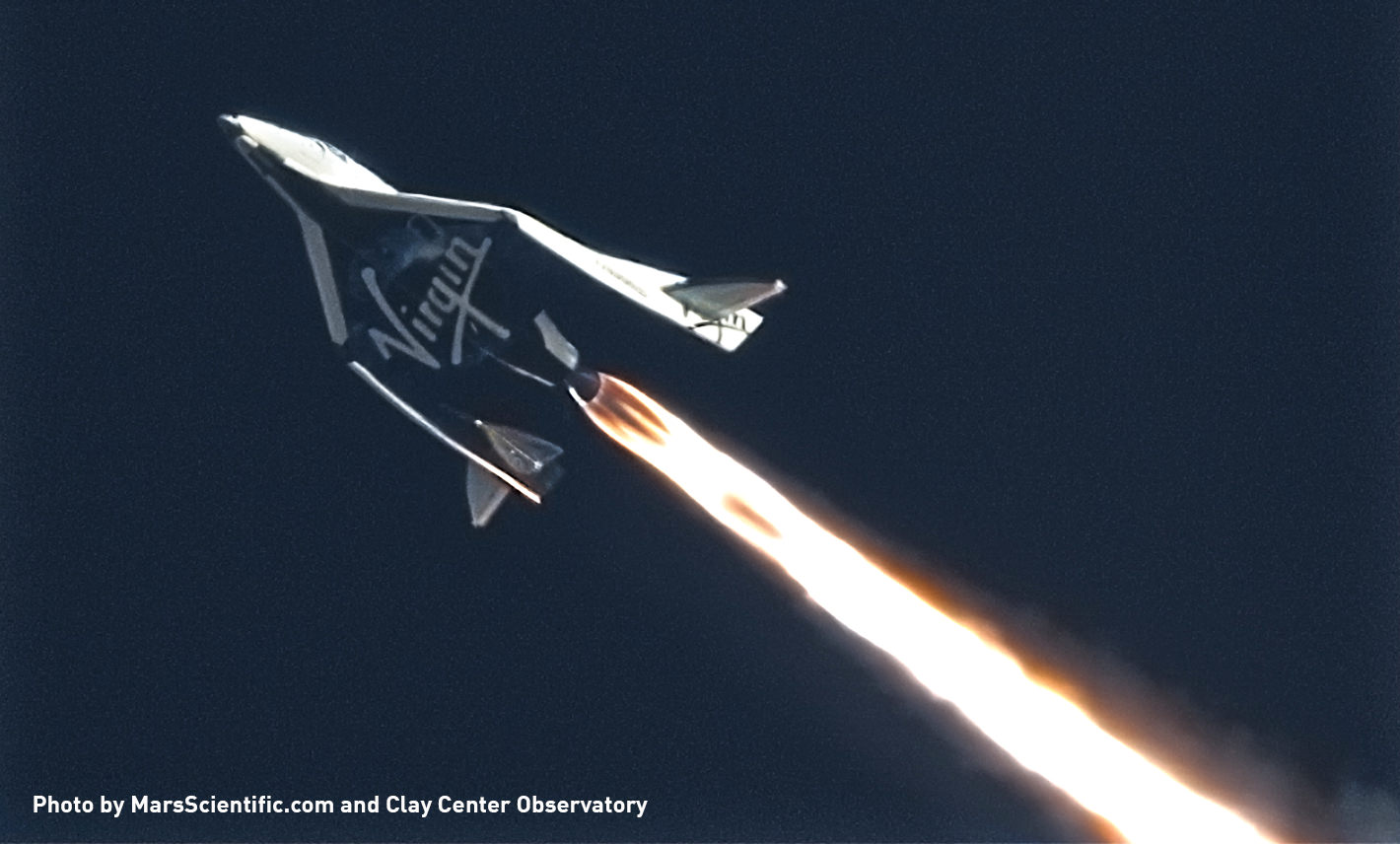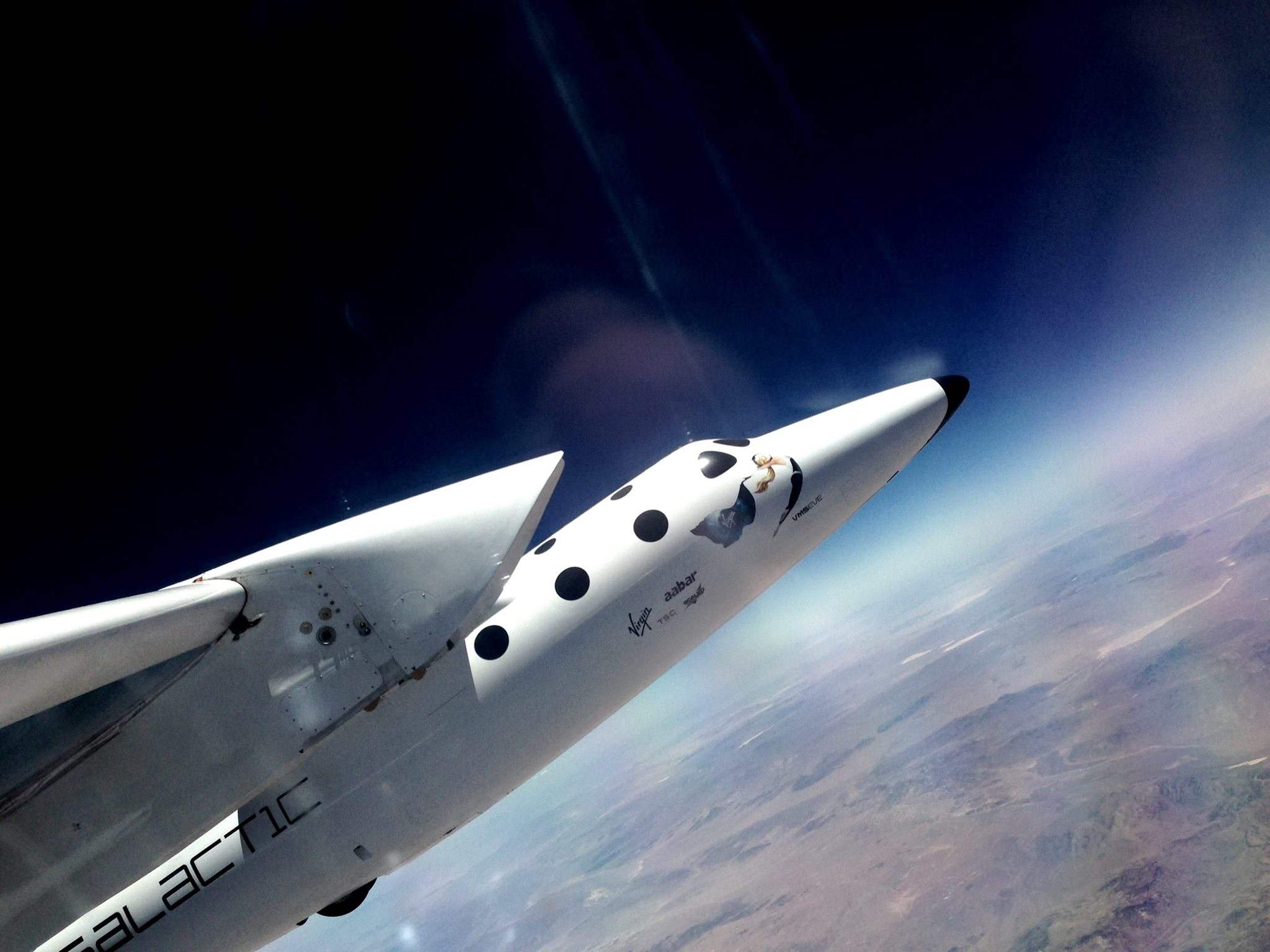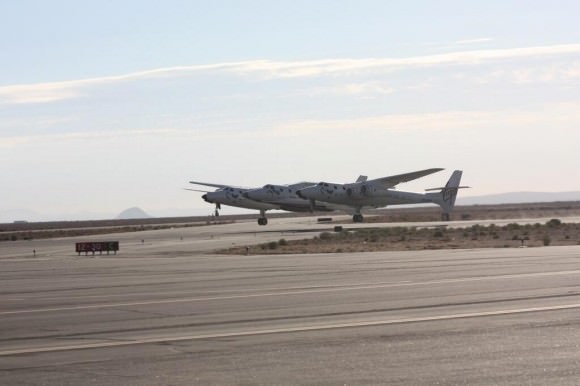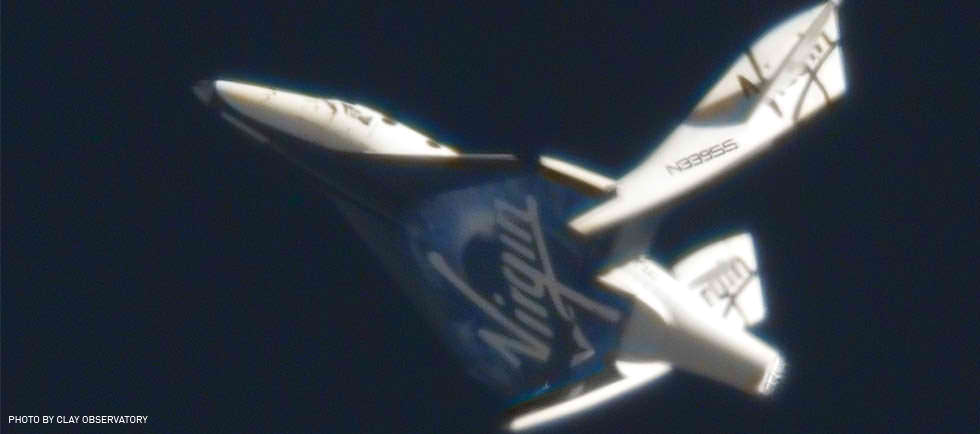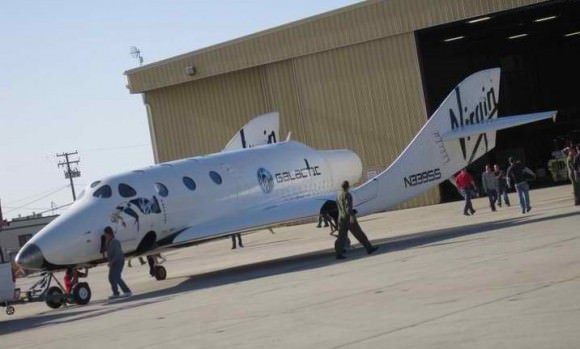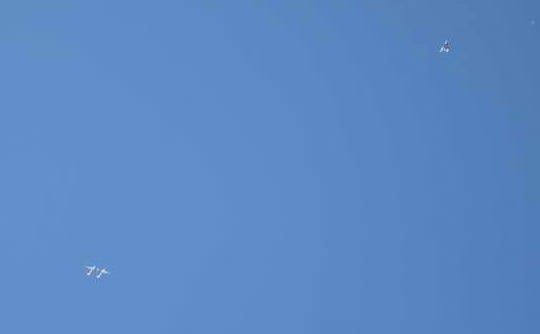According to reports on Twitter, Virgin Galactic’s SpaceShipTwo exploded in midflight, and debris was seen scattered on ground in the Mojave Desert in California. Virgin tweeted that the rocket plane suffered an “in-flight anomaly” during a powered test flight on Friday. Other witnesses said it involved a fatal explosion and crashed.
“The ship broke apart and started coming down in pieces over the desert,” tweeted Doug Messier (@spacecom), managing editor of the Parabolic Arc website.
The Associated Press is now reporting that the California Highway Patrol reports 1 fatality, 1 major injury after the SpaceShipTwo accident.
Virgin Galactic provided this statement via Twitter:
Virgin Galactic’s partner Scaled Composites conducted a powered test flight of #SpaceShipTwo earlier today. During the test, the vehicle suffered a serious anomaly resulting in the loss of SpaceShipTwo. WK2 (WhiteKnightTwo) landed safely. Our first concern is the status of the pilots, which is unknown at this time. We will work closely with relevant authorities to determine the cause of this accident and provide updates ASAP.
Virgin Galactic initially sent the news via this tweet:
#SpaceShipTwo has experienced an in-flight anomaly. Additional info and statement forthcoming.
— Virgin Galactic (@virgingalactic) October 31, 2014
News helicopters are now on site, providing views of the crash site, such as the one in this tweet:
News helicopter found #SpaceShipTwo. Thinking of the pilots and hoping they are ok. pic.twitter.com/Ngkk3Eh0hU
— Joe McWilliams (@doughyjoey5) October 31, 2014
The ABC News affiliate in California reported the rescue crew was seen “carrying person on stretcher to chopper.”
Doug Messier, who was onsite at Mojave for the test flight, also said via Twitter that he saw one of the crash sites and a “body still in seat.” Also that “Debris from the ship was scattered all over the road.”
SpaceShipTwo holds two pilots; they are each equipped with parachutes, but not ejection seats. Reports indicated at least one deployed parachute was sighted.
Other witnesses reported that SpaceShipTwo exploded after ignition of the engines. According to Spaceflightnow.com, SpaceShipTwo was making its first powered flight since January and was testing a redesigned nylon-based solid rocket motor. This was the 55th flight of SpaceShipTwo and its 35th free flight.
You can read a detailed look at this new engine, how and why it was developed, etc. in an article posted just yesterday by Doug Messier on Parabolic Arc.
Update: The FAA has now issued this statement:
Just after 10 a.m. PDT today, ground controllers at the Mojave Spaceport lost contact with SpaceShipTwo, an experimental space flight vehicle. The incident occurred over the Mojave Desert shortly after the space flight vehicle separated from WhiteKnightTwo, the vehicle that carried it aloft. Two crew members were on board SpaceShipTwo at the time of the incident. WhiteKnightTwo remained airborne after the incident. The FAA is investigating.
The National Transportation Safety Board (NTSB) tweeted that they are going “to send Go-Team to investigate Virgin Galactic test flight crash in Mojave, Calif.”
Update: According to the Kern County Sheriff’s spokesman, the co-pilot was killed, but pilot ejected and suffered moderate to major injuries in Virgin Galactic crash. Virgin Galactic did not provide information prior to the flight of who would be on board today’s test flight.
We’ll provide more updates as they become available.

